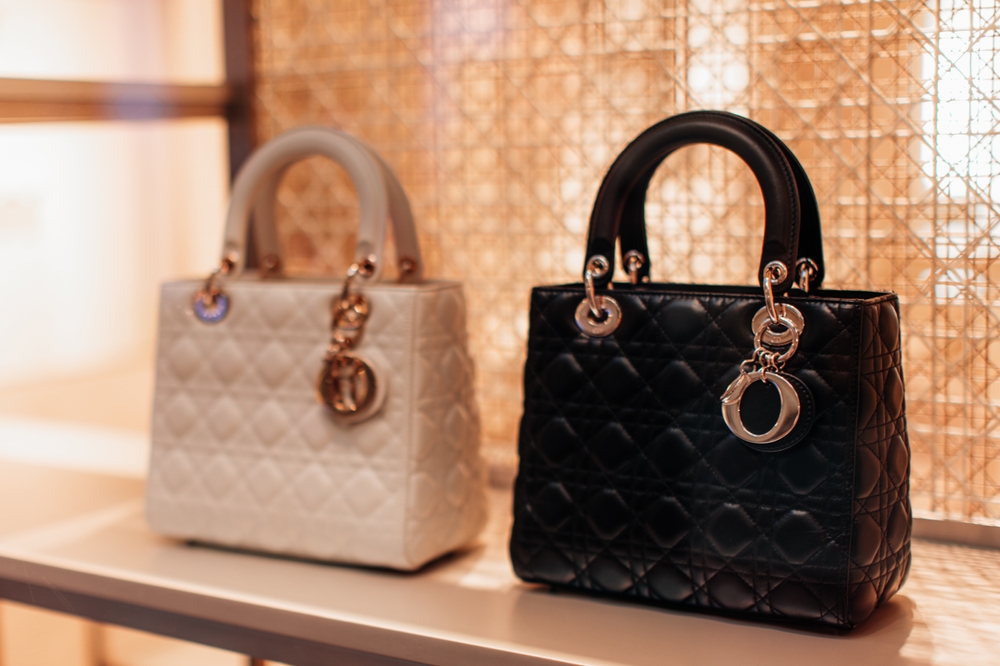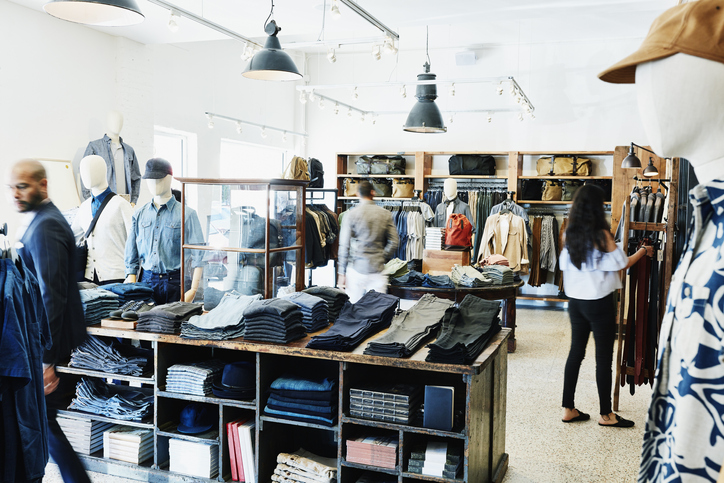Cheap Chinese Goods Are Becoming a Costly Problem. Exhibit A: Hong Kong.
Shoppers are hopping across the border after a prolonged decline in prices
Prices are falling in mainland China. That’s a boon for people living in Hong Kong, but a big problem for the city’s businesses.
Consumer prices in China fell 0.8% in January compared with a year earlier, the country’s biggest deflation reading in more than a decade. That is a sign of the tepid state of the world’s second-largest economy, where a sputtering recovery has knocked confidence and encouraged Beijing to censor some economic research .
Hong Kong residents are increasingly hopping across the border to the city of Shenzhen, where they load up on frozen food and cheap furniture at big-box stores such as Costco and Sam’s Club. Hong Kong business owners, unable to compete with their Chinese counterparts on price, are feeling the squeeze.
“Walking on the streets these days, you’ll feel that Hong Kong retailers are in big trouble,” said the city’s former financial secretary, John Tsang, in a recent social-media post.
The pain being felt by businesses in Hong Kong offers a partial answer to a question that has been debated by economists for much of the past year: How will deflation in China affect the rest of the world?
Chinese export prices have dropped steadily since late 2022 and were 8.4% lower in December than they were a year earlier, according to customs data. Economists think that’s probably a good thing for Europe and the U.S., where central banks have been forced to embark on an aggressive series of interest-rate increases to keep rising prices in check. But the impact on smaller countries could be more troublesome.
China is the biggest trading partner for many countries across the world, and is particularly influential for countries in Asia. The risk for them is that Chinese companies dump their goods overseas in response to weak demand at home. They can also undercut manufacturers in countries such as Vietnam and Malaysia, which have slowly been muscling in on China’s status as the world’s factory.
“This Hong Kong story is applicable to countries that are near the neighbourhood of China because the supply chain is much smaller,” said William Lee , chief economist at the Milken Institute, an economic think tank. The shorter supply chain for China’s trade with its neighbours means changes in price pass through more directly, rather than being swallowed up by the various companies that get involved in shipping goods over longer distances.
China’s neighbours in East Asia don’t have the option to impose protectionist policies against it, analysts at Citigroup wrote in a January note. China is simply too big a force in global trade for them to risk its ire.
But if it is hard for China’s neighbours to push back against falling prices, it is even tougher for Hong Kong—which is run by a pro-Beijing government that wants closer integration with the superpower next door.
Hong Kong residents are partly benefiting from the strength of the U.S. dollar. The Hong Kong dollar is pegged to the U.S. dollar, and the city’s de facto central bank has copied the Federal Reserve’s series of interest-rate increases over the past two years. China’s central bank has gone in the opposite direction, cutting rates in an attempt to boost the moribund economy.
Since the end of 2021, the Chinese yuan has lost more than 11% of its value against the Hong Kong dollar.
Counting the cost
Hong Kong’s economy grew 3.2% last year, clawing back some lost ground after a 3.7% contraction in 2022. But the numbers mask a host of difficult problems, including an exit of foreign businesses , a prolonged slump in the real-estate sector and the lowest fertility rate in the world .
The apparent embrace of what mainland China had to offer would have appeared unthinkable five years ago, when the city was swept up in antigovernment protests. Back then, shoppers and diners looked up colour-coded maps to help them identify businesses that shared their political stance to patronise—and avoided those perceived as having links to mainland China.
But years spent cooped up in Hong Kong during the pandemic and penny-pinching by anxious residents have helped boost Shenzhen’s appeal.
“We’re seeing a readjustment of our way of life that suggests economic interdependency between Hong Kong and Shenzhen,” said Edmund Cheng, a political sociology professor at the City University of Hong Kong.
Last year, Hong Kong residents made more than 50 million trips up north following the lifting of all pandemic-related travel restrictions in February, according to Hong Kong Immigration Department data. That’s still below pre pandemic levels, but the Hong Kong residents’ spending power helped boost retail sales in Shenzhen, which rose by 7.8% in 2023, recording one of the biggest jumps at any mainland city last year.
In a survey by a business lobby last year, just 37% of Hong Kong businesses said they expected revenue to grow in 2024. Less than a third thought they were on track to beat pre pandemic levels.
Korsy Lee, 39 years old, is one of many Hong Kong residents who make a regular pilgrimage to Shenzhen—and earns a profit from it. He began shuttling goods back from Shenzhen last August as a side hustle, and now goes there four times a week, loading up his Toyota minivan with frozen hamburgers, fish maw soup, Panasonic dishwashing machines and even toilet-paper rolls. He takes orders from customers and charges a flat fee.
“Eighty percent of my customers are housewives who want to make every penny count,” he said.
 Copyright 2020, Dow Jones & Company, Inc. All Rights Reserved Worldwide. LEARN MORE
Copyright 2020, Dow Jones & Company, Inc. All Rights Reserved Worldwide. LEARN MORE
This stylish family home combines a classic palette and finishes with a flexible floorplan
Just 55 minutes from Sydney, make this your creative getaway located in the majestic Hawkesbury region.
Continued stagflation and cost of living pressures are causing couples to think twice about starting a family, new data has revealed, with long term impacts expected
Australia is in the midst of a ‘baby recession’ with preliminary estimates showing the number of births in 2023 fell by more than four percent to the lowest level since 2006, according to KPMG. The consultancy firm says this reflects the impact of cost-of-living pressures on the feasibility of younger Australians starting a family.
KPMG estimates that 289,100 babies were born in 2023. This compares to 300,684 babies in 2022 and 309,996 in 2021, according to the Australian Bureau of Statistics (ABS). KPMG urban economist Terry Rawnsley said weak economic growth often leads to a reduced number of births. In 2023, ABS data shows gross domestic product (GDP) fell to 1.5 percent. Despite the population growing by 2.5 percent in 2023, GDP on a per capita basis went into negative territory, down one percent over the 12 months.
“Birth rates provide insight into long-term population growth as well as the current confidence of Australian families,” said Mr Rawnsley. “We haven’t seen such a sharp drop in births in Australia since the period of economic stagflation in the 1970s, which coincided with the initial widespread adoption of the contraceptive pill.”
Mr Rawnsley said many Australian couples delayed starting a family while the pandemic played out in 2020. The number of births fell from 305,832 in 2019 to 294,369 in 2020. Then in 2021, strong employment and vast amounts of stimulus money, along with high household savings due to lockdowns, gave couples better financial means to have a baby. This led to a rebound in births.
However, the re-opening of the global economy in 2022 led to soaring inflation. By the start of 2023, the Australian consumer price index (CPI) had risen to its highest level since 1990 at 7.8 percent per annum. By that stage, the Reserve Bank had already commenced an aggressive rate-hiking strategy to fight inflation and had raised the cash rate every month between May and December 2022.
Five more rate hikes during 2023 put further pressure on couples with mortgages and put the brakes on family formation. “This combination of the pandemic and rapid economic changes explains the spike and subsequent sharp decline in birth rates we have observed over the past four years,” Mr Rawnsley said.
The impact of high costs of living on couples’ decision to have a baby is highlighted in births data for the capital cities. KPMG estimates there were 60,860 births in Sydney in 2023, down 8.6 percent from 2019. There were 56,270 births in Melbourne, down 7.3 percent. In Perth, there were 25,020 births, down 6 percent, while in Brisbane there were 30,250 births, down 4.3 percent. Canberra was the only capital city where there was no fall in the number of births in 2023 compared to 2019.
“CPI growth in Canberra has been slightly subdued compared to that in other major cities, and the economic outlook has remained strong,” Mr Rawnsley said. “This means families have not been hurting as much as those in other capital cities, and in turn, we’ve seen a stabilisation of births in the ACT.”
This stylish family home combines a classic palette and finishes with a flexible floorplan
Just 55 minutes from Sydney, make this your creative getaway located in the majestic Hawkesbury region.






















